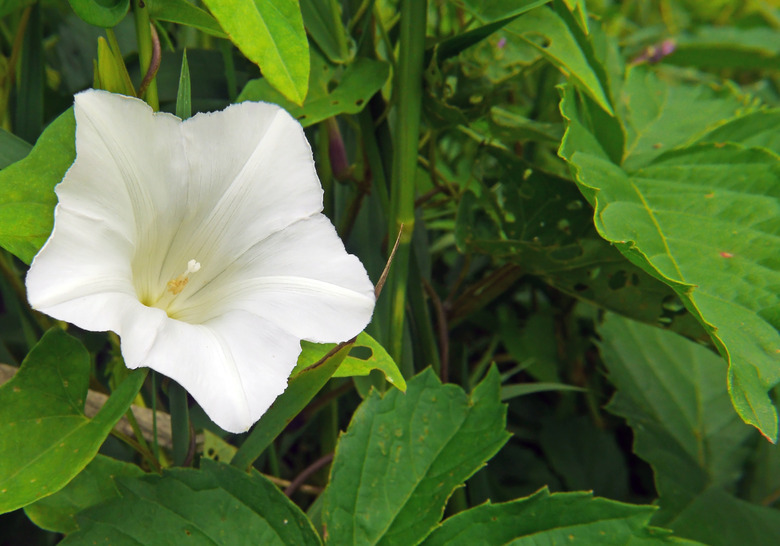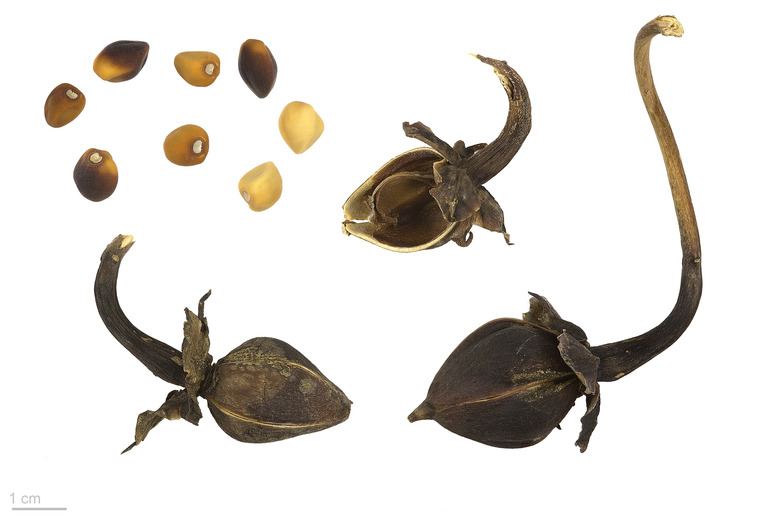How To Dry Moonflower Seedpods
Gathering moonflower seedpods is the first step toward saving these seeds at home, but the pods must also be dried and stored under the right conditions to keep them fresh.
Moonflower vines (Ipomoea alba) are typically grown as annuals, but they are actually a tender perennial plant that will grow year-round within U.S. Department of Agriculture plant hardiness zones 10b to 12a. Saving seed from these tender tropical vines is necessary in colder climates, where they die back in autumn.
Moonflower seedpods are easy to gather and dry, but the process must be done at the right time of year to ensure that the seeds are ripe.
Warning
Be sure to wear gloves when working closely with moonflowers or their seedpods, as all parts of the plant are mildly toxic.
Gathering Moonflower Seedpods
Moonflowers produce their subtly showy, fragrant flowers in late summer. The creamy-white, trumpet-shaped flowers open in late afternoon and remain open until dawn.
Bees and nocturnal pollinators such as moths are strongly attracted to the flowers and will pollinate them while foraging for nectar. Pollinated moonflowers produce 1-inch-long seed capsules that contain four white seeds inside, according to the North Carolina State University Cooperative Extension. The seed capsules start out green and turn copper-brown when fully ripe.
Snip off the seed capsules once they are mostly brown along the stem and across the capsule itself. Make the cut on the stem midway between the pod and the main stem. Use sharp, clean pruning shears with a narrow blade, which will allow for a precise cut.
All parts of the moonflower plant are mildly toxic, so it's a good idea to wear gloves when working closely with the plant or its seedpods.
Drying Moonflower Seedpods
Moonflower seedpods must be dried completely to help ensure that the seeds inside are fully ripened. Drying the seedpods will also help prevent mold or mildew growth on the seeds during storage.
To dry them, spread the seedpods in a single layer on top of a flat surface such as a tabletop or a baking sheet covered in newspaper. Choose a location with good airflow and moderately warm temperatures out of direct sunlight. Stir the seedpods around every day or so to ensure even drying on all parts of the pod.
Seedpods should be dried until they can be broken apart by hand or shattered with a hammer, according to the PennState University Extension. Crack open the pods by hand or use a small rubber mallet to crack open the segmented capsules.
Each of the dried seedpods contains four creamy-white seeds inside. Pick through the seeds and throw away any that have signs of damage, such as puckered spots, holes or mildew growth.
Things Needed
- Gloves
- Pruning shears
- Newspaper
- Rubber mallet
- Airtight storage container
Storing and Starting Moonflower Seeds
Moonflower seeds will remain viable for one to two years if stored at room temperature and up to three years if kept under cool, dry conditions, according to the UIC Heritage Garden.
Store the seeds in an airtight jar or plastic food storage container. Label it with the plant variety and date before storing it in a cupboard or refrigerator until the following spring. Mold and mildew growth is unlikely on properly dried seeds, but you might want to add a desiccant pack if your house is damp or you live in a humid climate.
Cornell University Home Gardening recommends starting moonflowers from seed indoors four to six weeks before the last spring frost or directly in the garden once all frost danger has passed and the soil has warmed.
The seeds need a little extra help in air germination, so the North Carolina State University Cooperative Extension recommends soaking the seeds overnight in warm water or rubbing the seeds with fine sandpaper to weaken the outer hull, which will help them sprout.

